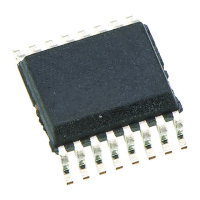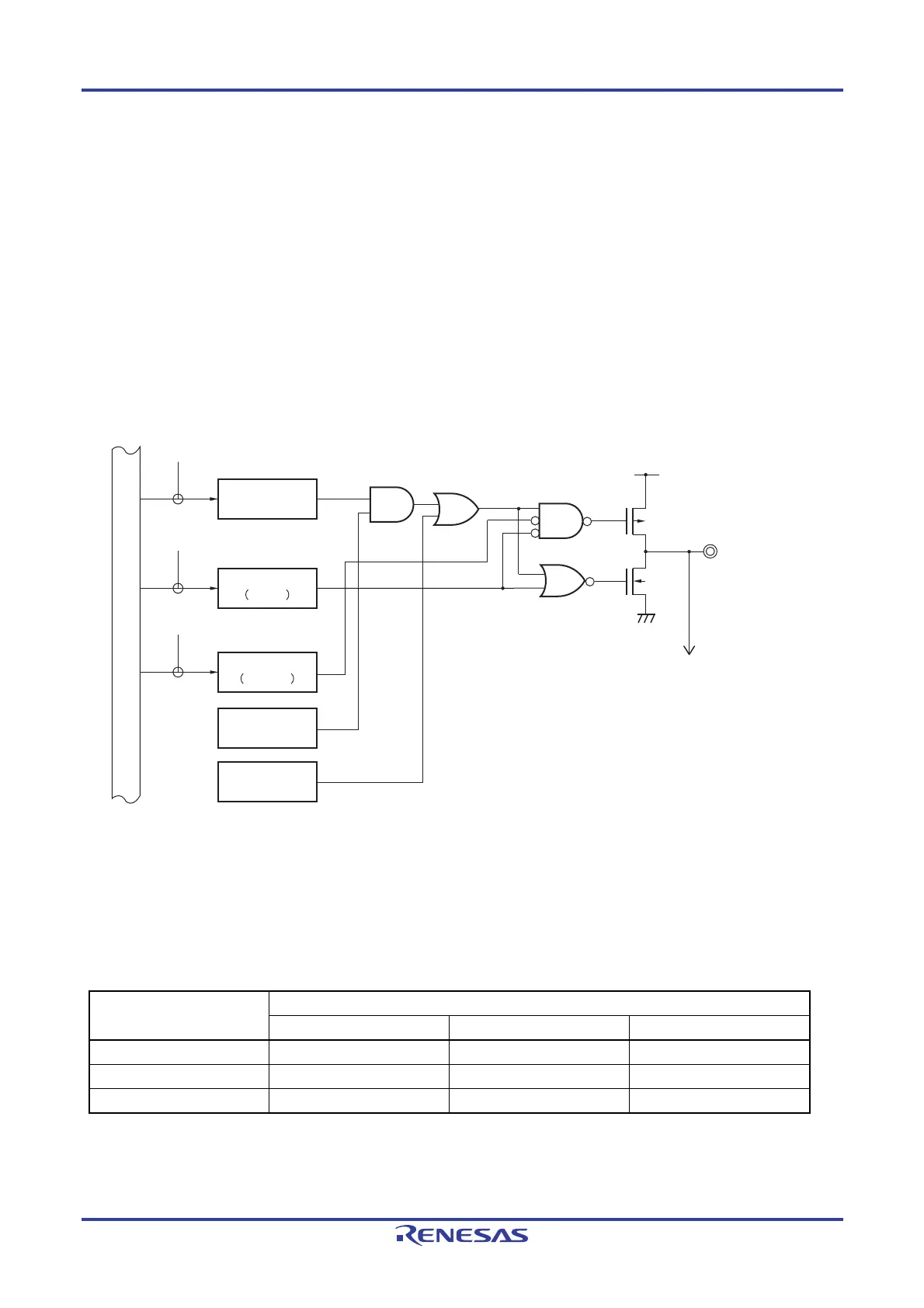RL78/G10 CHAPTER 4 PORT FUNCTIONS
R01UH0384EJ0311 Rev. 3.11 68
Dec 22, 2016
4.5 Register Settings When an Alternate Function Is Used
4.5.1 Basic concepts on using an alternate function
If a given pin is also used alternately for analog input, first in the port mode control register 0 (PMC0) specify whether
the pin is to be used in analog input or digital output.
The basic configuration of an output circuit for pins that are used in digital I/O is shown in Figure 4-7. The output from
the SAU function doubling as an output from the port output latch is input into the AND gate. The output from the AND
gate is input into the OR gate. To the other input pin for the OR gate, the outputs from alternate non-SAU functions (TAU,
clock/buzzer output, IICA, etc.) are connected. When such a pin is used as a port or alternate function, the alternate
function that is not used must not interfere with the output from the function to be used. Table 4-4 summarizes underling
concepts of specifying basic settings for making that distinction.
Figure 4-7. Basic Configuration of the Output Circuit for the Pins
Pmn/Alternate function
WR
PM
WRPOM
(Pmn)
POM register
Alternate function
Alternate function
POMmn
(SAU)
(other than SAU)
VDD
VSS
P-ch
N -ch
WRPORT
Note 1
Note 2
Note 3
PM register
PMmn
Output latch
To the input circuit
Internal bus
Notes 1. In the absence of a POM register, this signal should be considered Low (0).
2. In the absence of an alternate function, this signal should be considered High (1).
3. In the absence of an alternate function, this signal should be considered Low (0).
Remark m: port number (m = 0, 4, 12, 13); n: bit number (n = 0 to 7)
Table 4-4. Basic Settings
Output function of the pin
used
Output settings for alternate functions that are not used
Port function SAU output function Non-SAU output function
Port output function
−
Output: High (1) Output: Low (0)
SAU output function High(1)
−
Output: Low (0)
Non-SAU output function Low(0) Output: High (1) Output: Low (0)
Note
Note Since more than one non-SAU output function can be assigned to a given pin, the output from an alternate
function that is not used must be set to Low (0). For specific settings methods, see 4.5.2 Register settings for
alternate functions that do not use an output function.

